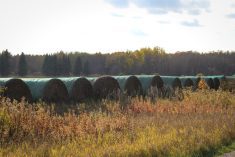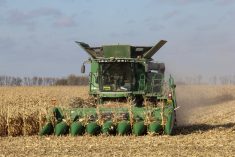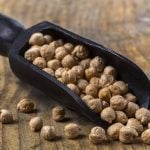CNS Canada –– Dryness in Saskatchewan could support global canaryseed prices, as the province produces nearly all of Canada’s crop.
Canada is the world’s largest producer and exporter of canaryseed worldwide, according to a federal government report.
Kevin Hursh, executive director for the Canaryseed Development Commission of Saskatchewan, expects global canaryseed prices will eventually react to the dryness in Saskatchewan, but said he hasn’t seen dramatic changes yet.
“So far I’ve only seen new-crop prices up a little bit. I’ve seen a couple of companies offering 25 cents a pound for new-crop production contracts.”
Read Also

U.S. grains: Corn, wheat futures climb on Black Sea tensions
Chicago corn and wheat futures rose on Tuesday, lifted by worries about tensions in the Black Sea grain export region as well as cold weather slowing grain movement in the U.S. Midwest, analysts said. Soybeans were lower.
The majority of Saskatchewan’s canaryseed crops are in good to poor condition as soil moisture continues to drop, according to the province’s crop report for June 9 to 15.
West-central and northeastern Saskatchewan both have 33 per cent of crops in poor condition, and 23 per cent in very poor condition.
The report shows other regions with crops in poor condition ranging from one to 14 per cent.
Hursh said he expects yield and yield potential to drop in upcoming months, especially with Environment Canada forecasting above-average temperatures for this summer.
“With the hot weather that’s called for this summer, I think that’s going to further cook a lot of crops,” he said.
Though crops have been damaged and have less-than-ideal growing conditions, growing canaryseed has benefits, Hursh said.
“Even though it’s a small seed, you don’t have to seed as shallow as you would a crop like canola. So I think in most cases the emergence is not as spotty as canola.”
There are two major types of canaryseed grown globally.
The first type is “itchy,” as the seed has tiny hairs on it, which can irritate skin during harvest and handling. The second type of seed is “glabrous,” meaning hairless. About 60 per cent of this year’s crops are the itchy kind, Hursh said.
“Of course the hairless varieties — the glabrous varieties — are much more pleasant to work with. They’re far less itchy but those varieties, even though they’re newer, don’t yield as well as the older variety.”
Most producers have stuck with itchy, to get an extra 10 or 20 per cent yield — but producers will still likely see a drop in production, Hursh said.
“It’s been a while since we’ve had a significant drought year, and I suspect all the canaryseed yields will take a hit.”
— Jade Markus writes for Commodity News Service Canada, a Winnipeg company specializing in grain and commodity market reporting.















